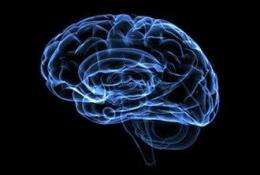New research on how the brain makes decisions

(Medical Xpress)—Neuroscience researchers at Trinity College Dublin have opened a new avenue for research on how the brain enables us to make decisions about our environment. By observing the gradual formation of a decision in brain activity before the particular decision was actually reported, the findings also have the potential to contribute to improved understanding and diagnosis of numerous brain disorders that are associated with impaired perceptual decision making. The discovery was recently published in Nature Neuroscience.
When interacting with our environment, we need to be sure about what we're seeing, feeling or hearing in order to decide how to act. What does that road sign ahead say? Is that a train I hear approaching? Is it too dark for me to cycle home without a light? Somehow the brain enables us to make concrete decisions about the vast and often unreliable array of information it continually receives through the senses. One influential theory about how this might be achieved proposes that the brain allows information from the senses to accumulate over time and only commits to a particular decision once a reliable quantity has been gathered. While this theory has existed for several decades Assistant Professor, Redmond O'Connell at the Trinity College Institute of Neuroscience and colleagues are the first to have identified exactly how this occurs in the human brain.
The researchers designed a new test which required participants to detect a gradual change in a visual display or an auditory tone. The gradual change occurred over several seconds and was undetectable at first but eventually became obvious. This allowed the researchers to pinpoint the precise moment at which participants decided that a change had occurred. At the same time, the researchers recorded brain activity using electrodes placed on the scalp. Using this method the authors succeeded in isolating a brain signal that increased in parallel with the visual or auditory change and continued to increase thereafter. Most importantly, the authors found that participants only reported perceiving the change once this signal had reached a certain level. As a result, it was possible to precisely predict both the timing and accuracy of the participant's decisions simply by monitoring this brain signal. In other words, it was possible to observe the gradual formation of a decision in the participant's brain activity before that decision was actually reported.
"These findings represent an important breakthrough for neuroscience by opening a new avenue for research on how the brain enables us to make decisions about our environment. Furthermore, by isolating discrete neural signals that are closely tied to behaviour, this work has the potential to contribute to improved understanding and diagnosis of numerous brain disorders that are associated with impaired perceptual decision making," says Dr O'Connell.
The study was conducted in collaboration with researchers at City College New York.
More information: A supramodal accumulation-to-bound signal that determines perceptual decisions in humans. Nature Neuroscience, October 28, 2012.














